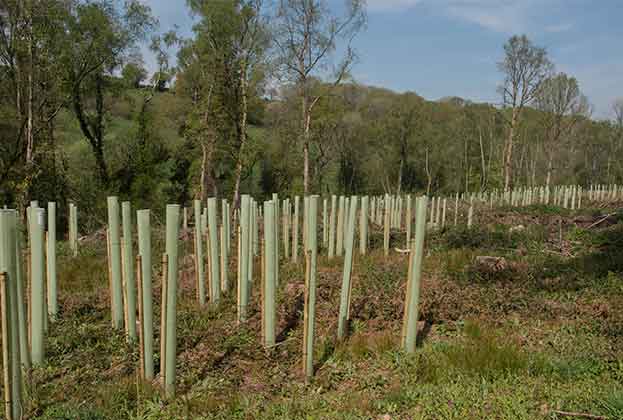Constrained supply and the increasing demand for rural land brings an end to six years of poor performance
Results from the Savills Farmland Values Survey show values increased by an average of 6.2% during 2021. This is the strongest annual growth since 2014 and is clear evidence of renewed interest in the farmland market. The sustained lack of supply is driving values higher as more active purchasers compete in a crowded market.
Building on the trend that emerged in 2021, it is pasture land that is leading this growth. Poor livestock land and average livestock land have increased 8.8% and 8.7%, respectively, since December 2020. By comparison, prime arable and Grade 3 arable grew 4% and 5.5%. The average price for poor livestock land has almost equalled its previous peak and has already reached it in some regions.
Regionally, the strongest growth across all land types was recorded in Scotland where values increased by 31.2% during 2021. In part, this is as a result of the demand for tree planting land in a buoyant forestry sector, as well as building interest from environmentally motivated buyers. As a result of these potentially competing interests, these buyers are broadening their search criteria beyond poor livestock land and hill land in order to make purchases, which is causing values across all land types to increase.
The sustained lack of supply is driving values higher as more active purchasers compete in a crowded market
Andrew Teanby, Associate Director, Rural Research
The growth in land values across the full spectrum of farm types and qualities is a signal of the change in sentiment towards investing in farmland. The market has been subdued for several years due to prolonged political and economic uncertainty, which started with the EU referendum in 2016. However, UK farmland’s history of long-term, stable returns looks appealing against the volatility of other asset classes in recent years.
Looking beyond average values the market continues to exhibit a significant amount of variation. Property quality, local demand and other special purchaser motivations may have a greater influence on buyer sentiment, and we have seen that land can remain on the market for some time if sufficient demand does not exist. This highlights the importance of identifying a property’s strengths and developing a marketing strategy that targets the key markets for it.
BUYERS AND SELLERS
Analysis of Savills transactions in 2021 shows that existing farmers continue to be the largest proportion of buyers in the market, but they fell from 49% of buyers in 2020 to 46% last year. Non-farming buyers were successful in 38% of deals, and there was a second successive strong year for institutional and corporate investment in farmland. Institutional and corporate buyers accounted for 16% of buyers compared to a ten-year average of 10%.
Compared to 2020, farmers were more active as vendors, as a proportion of transactions, their share increased from 23% to 29%, but was still below average. Institutions and corporate bodies formed a smaller proportion of vendors than previously, perhaps as a result of net zero targets strengthening their business case for holding rural investments. Overall, 68% of sales were due to retirement or personal reasons, a significant increase from the ten-year average of 39%. This suggests that farmers and non-farmers, including retirees or those who have inherited land, are becoming more confident making major investment decisions in the current business environment.
Results from the Savills Farmland Values Survey show values climbed by an average of 6.2% during 2021. This is the strongest annual growth since 2014
Andrew Teanby, Associate Director, Rural Research
Farmland market value dynamics across Great Britain 2021
Read the articles within Spotlight: The Farmland Market below.
.jpg)
